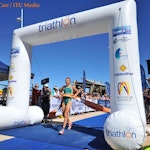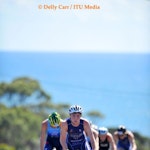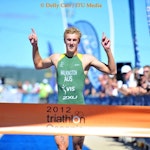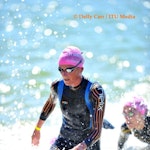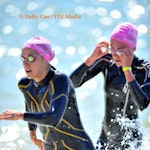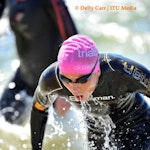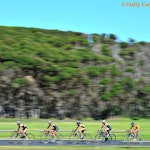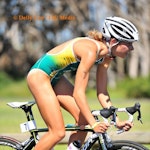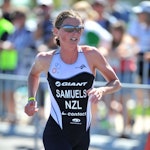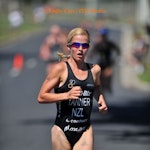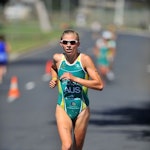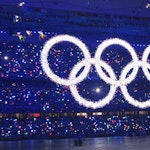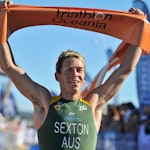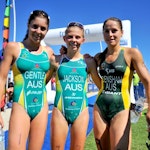2012 Olympic qualifying update after Oceania Championships
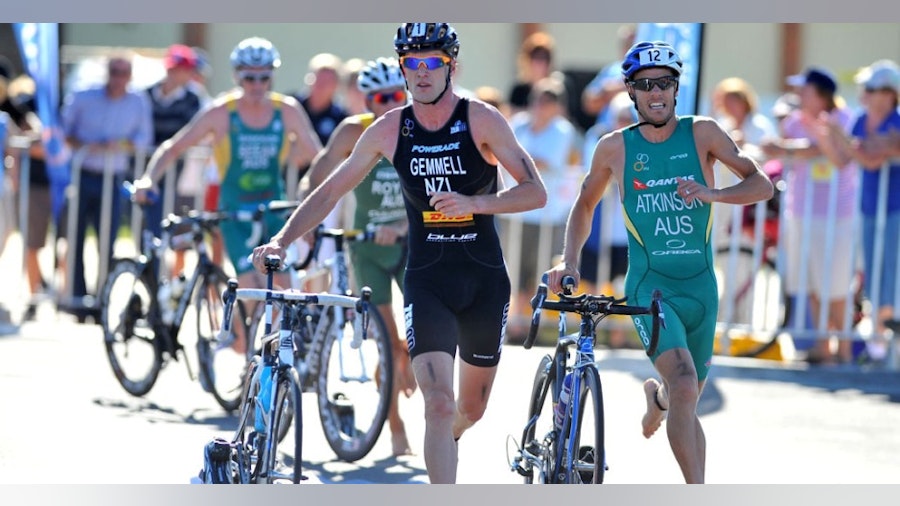
After New Zealand claimed both Oceania spots heading into Beijing in 2008, Australian high performance manager Michael Flynn said taking those two spots at the 2012 Devonport OTU Oceania Triathlon Championships was his team’s priority in Tasmania.
Given that the qualification process for triathlon works from two sides (ITU and then each athlete’s own National Federation), it was a team goal for both Australia and New Zealand. As athletes collect ITU Olympic qualification points to secure places for their country on the start line, and a total of 55 places in the men’s and women’s races, a maximum of eight National Olympic Committees (NOCs) can qualify three places. Claiming an Oceania title means that Australia secured two (one women’s and one men’s).
With wins to Emma Jackson and Brendan Sexton, Australia did just that and appeared to have a head start on the race to claim three women’s spots and three men’s spots. However, the results didn’t do too much to harm New Zealand’s chances either. Here we delve into the rankings simulator, which takes the current qualification information and tells you how many athletes countries can send if Olympic qualification ended today.
Women’s Olympic Qualification
In the women’s field, Jackson moved herself up into the Oceania spot, which was previously held by Ashleigh Gentle (AUS), and in turn boosted her own selection credentials. While the race was not a qualifying race for Jackson’s federation (Triathlon Australia), the Oceania title and her fourth place finish in the ITU World Triathlon Series last year, puts her in the driver’s seat for Olympic selection next to Emma Moffatt, who has already been pre-selected.

While the New Zealand women didn’t claim a place on the podium, the points Debbie Tanner gained from her fourth place moved her up the rankings leaderboard and helped New Zealand leapfrog over Germany from eighth spot into seventh among the NOCs with three athletes qualified.
To determine which countries get to send three women, one has to see where the country’s third ranked athlete is placed in relation to another country’s third ranked athlete.
Tanner is currently holding New Zealand’s third spot and is ranked #30 in ITU’s Olympic qualification list. That is six places higher than Kathrin Mueller who is holding Germany’s third spot, which means that if Olympic qualification ended today, Germany would be the last and eighth country to send three women. With just over two full months to go, both teams will still have to actively chase points to hold onto their three spots.
So who should New Zealand and Germany watch? Switzerland, and Daniela Ryf to be more specific. Ryf is the Swiss number three, but as Germany was the last to get three spots, Switzerland can only send two women, unless Ryf overtakes Mueller in the rankings.
After an injury-plagued 2011 campaign, Ryf is currently #46 in the ITU Olympic qualification list, trailing Mueller by 302 points. That is about the difference between 12th place and 29th in one ITU World Triathlon Series event, meaning one race could make someone’s Olympic dream, while shattering another. With three WTS events, three World Cups and three Continental Championships still to go in 2011, the race to get to London 2012 is far from over.
Click here for the current ITU Women’s Olympic Simulation
Men’s Olympic Qualification
The men’s Olympic qualification picture also changed with Sexton’s win, but only slightly. The 26-year old knocked off defending champion Kris Gemmell and therefore New Zealand out of the Oceania spot, securing at least one spot for Australia. Courtney Atkinson’s fifth place finish helped him move up to 27th place on the Olympic qualification list, and means that the Australian men’s team are currently fifth out of eight NOCs to qualify three spots, jumping up from seventh spot.

Interestingly, Gemmell is New Zealand’s third man at #26 in the Olympic qualification list, with Atkinson right behind him at #27. Adding more intrigue is Jose Miguel Perez who has Spain as the sixth country and he’s right behind Atkinson at #28, keeping these three countries tightly bunched and in relatively good positions to each send three men to London. But who’s chasing them? Joao Pereira has Portugal as the seventh of eight countries as he holds onto #35 place in the Olympic qualification list while Ivan Vasiliev at #39 has Russia hanging on as the last country that can qualify three men.
Vasiliev and the Russians will need to keep a watchful eye on Kyle Jones and Manuel Huerta. Jones is Canada’s third highest ranked man at #40 in the Olympic qualification list, meaning he needs to overtake Vasiliev for Canada to qualify three men. Right now Jones trails Vasiliev by only 64 points, which is about the difference between 8th place and 11th place in a World Cup. Also in the hunt is Huerta, who is trying to get three spots for the U.S. At #50 in the Olympic qualification list, he trails Jones by 277 points.
Great Britain, Germany and France are currently the top three nations on the men’s side, with William Clarke, Maik Petzold and Tony Moulai respectively holding their countries’ third spots. With New Zealand, Australia and Spain also on safer ground behind those top three, the battle will likely come down to Portugal, Russia, Canada, and the U.S., with only two of those four countries able to send three men to the London Olympics. Overall, the same applies for the men as does the women, there are still plenty of points to chase in the next two months to secure those spots.
Click here for the current ITU Men’s Olympic Simulation
ITU’s rankings simulations will be updated after every major race day until May 31st, when the Olympic qualification period ends. They are only a guide to the current Olympic rankings, not the final and definitive list. Click here for more on Olympic qualification.
Article gallery
Related Event: 2012 Devonport OTU Triathlon Oceania Championships
| Results: U23 Women | |||
|---|---|---|---|
| 1. | Simone Ackermann | RSA | 01:58:31 |
| 2. | Sophie Corbidge | NZL | 02:00:09 |
| 3. | Rebecca Kingsford | NZL | 02:01:42 |
| 4. | Teresa Adam | NZL | 02:02:19 |
| 5. | Chloe Turner | AUS | 02:05:03 |
| Results: U23 Men | |||
|---|---|---|---|
| 1. | James Hodge | AUS | 01:49:41 |
| 2. | Tom Davison | NZL | 01:50:01 |
| 3. | Matt Brown | AUS | 01:51:04 |
| 4. | David Mainwaring | AUS | 01:51:58 |
| 5. | James Chronis | GRE | 01:52:26 |
| Results: Junior Women | |||
|---|---|---|---|
| 1. | Mikayla Nielsen | NZL | 01:05:00 |
| 2. | Jaz Hedgeland | AUS | 01:05:10 |
| 3. | Tamsyn Moana-Veale | AUS | 01:05:22 |
| 4. | Maddie Dillon | NZL | 01:06:08 |
| 5. | Elise Salt | NZL | 01:06:19 |
| Results: Junior Men | |||
|---|---|---|---|
| 1. | Marcel Walkington | AUS | 01:00:30 |
| 2. | Kenji Nener | JPN | 01:00:54 |
| 3. | Joel Tobin White | AUS | 01:01:10 |
| 4. | Sam Ward | NZL | 01:01:33 |
| 5. | Kieran Roche | AUS | 01:01:36 |
| Results: Elite Women | |||
|---|---|---|---|
| 1. | Emma Jackson | AUS | 01:56:36 |
| 2. | Ashleigh Gentle | AUS | 01:57:26 |
| 3. | Erin Densham | AUS | 01:57:43 |
| 4. | Debbie Tanner | NZL | 01:57:56 |
| 5. | Nicky Samuels | NZL | 01:58:22 |
| Results: Elite Men | |||
|---|---|---|---|
| 1. | Brendan Sexton | AUS | 01:46:46 |
| 2. | Kris Gemmell | NZL | 01:47:27 |
| 3. | Aaron Royle | AUS | 01:48:02 |
| 4. | Tony Dodds | NZL | 01:48:33 |
| 5. | Courtney Atkinson | AUS | 01:48:35 |
| Results: 60-64 Male AG | |||
|---|---|---|---|
| 1. | Eric Jarrett | AUS | 03:02:26 |
| Results: 55-59 Male AG | |||
|---|---|---|---|
| 1. | Bill Thornbury | AUS | 02:27:07 |
| 2. | Martin Durkin | AUS | 02:31:35 |
| 3. | Benny Parsons | AUS | 02:32:46 |
| 4. | Daryl Purdie | AUS | 02:38:28 |
| 5. | William Bardsley | AUS | 02:41:36 |
| Results: 50-54 Male AG | |||
|---|---|---|---|
| 1. | Stephen Fenton | AUS | 02:23:36 |
| 2. | Terry Moore | AUS | 02:26:11 |
| 3. | Bill Stahlhut | AUS | 02:26:20 |
| 4. | Simon Ronalds | AUS | 02:27:13 |
| 5. | Kym De Britt | AUS | 02:29:58 |
| Results: 50-54 Female AG | |||
|---|---|---|---|
| 1. | Christine Cook | AUS | 03:00:19 |
| 2. | Maggie Squires | AUS | 03:18:17 |
Related articles
-
Olympic Qualification 101 – How athletes and countries get to London 2012
The road to London 2012 is not only long and grueling, it’s also complex. How many athletes can each country send? And how do athletes earn one of the coveted spots on the Olympic start line? We try to explain06:44 - 12 Mar, 2012 -
Brendan Sexton the top man at 2012 OTU Oceania Championships in Devonport
Australia's Brendan Sexton managed to turn an unexpected opportunity into the perfect result in Devonport, claiming the 2012 Elite Men's OTU Oceania Championship ahead of Kris Gemmell and Aaron Royle.09:31 - 10 Mar, 2012 -
Australia's Emma Jackson takes out 2012 Elite Women's Oceania title in Devonport
Emma Jackson led an Australian sweep in Devonport, ahead of Ashleigh Gentle and Erin Densham, as the Australian women strengthened their London bid at the 2012 OTU Oceania Championships.08:55 - 10 Mar, 2012
